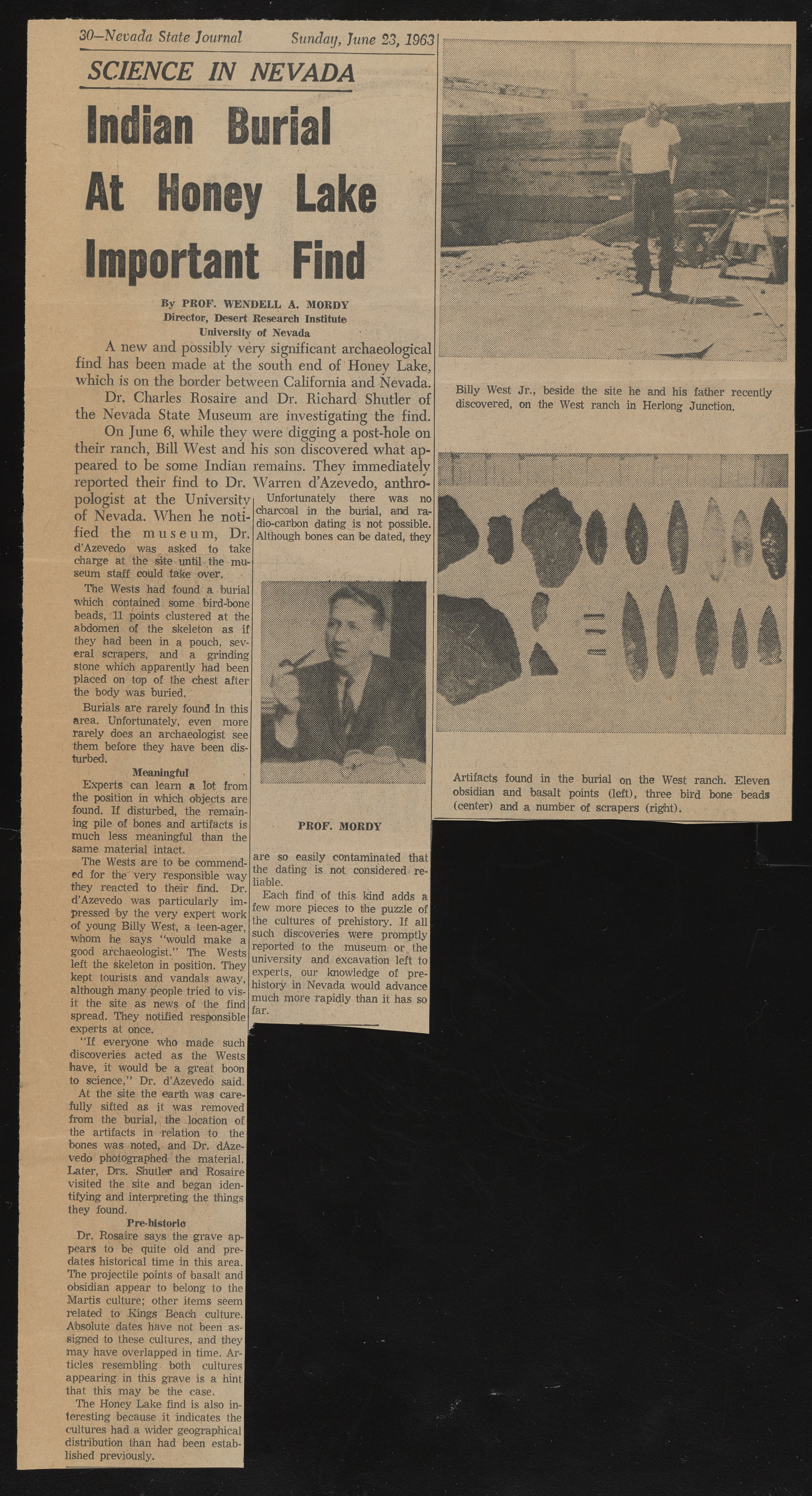Copyright & Fair-use Agreement
UNLV Special Collections provides copies of materials to facilitate private study, scholarship, or research. Material not in the public domain may be used according to fair use of copyrighted materials as defined by copyright law. Please cite us.
Please note that UNLV may not own the copyright to these materials and cannot provide permission to publish or distribute materials when UNLV is not the copyright holder. The user is solely responsible for determining the copyright status of materials and obtaining permission to use material from the copyright holder and for determining whether any permissions relating to any other rights are necessary for the intended use, and for obtaining all required permissions beyond that allowed by fair use.
Read more about our reproduction and use policy.
I agree.Information
Digital ID
Permalink
More Info
Rights
Digital Provenance
Publisher
Transcription
30—Nevada State Journal Sunday, June 23,1963 SCIENCE IN NEVADA Indian At Honey Lake Important Find By PROF. WENDELL A. MORDY Director, Desert Research Institute University of Nevada A new and possibly very significant archaeological find has been made at the south end of Honey Lake, which is on the border between California and Nevada. Dr. Charles Rosaire and Dr. Richard Shutler of the Nevada State Museum are investigating the find. On June 6, while they werd digging a post-hole bn their ranch, Bill W est and his son discovered what appeared to be some Indian remains. They immediately reported their find to Dr. W arren cTAzevedo, anthropologist at the University Unfortunately there was no of Nevada. W hen he notified the m u s e u m , Dr. d’Azevedp was asked to take charge at the site until the museum staff eoiild take over. The Wests had found a burial which contained some bird-hone beads, :H joints clustered at the abdomen of the skeleton as if they had been in a pouch, several scrapers, and a grinding stone which apparently had been placed on top of the chest after the body was buried. Burials are rarely found in this area. Unfortunately, even more rarely does an archaeologist see them before they have been disturbed'. Meaningful Experts can learn a lot from the position in which objects are found. E disturbed, the remain ing pile of bones and artifacts is much less meaningful than the same material intact. The Wests are to be commended for the very responsible way they reacted to thMr find. Dr. d’Azevedo was particularly impressed by the very expert work of young Billy West, a teen-ager, whom he says “ would make a good archaeologist.” The Wests left the skeleton in position. They kept tourists and vandals away, although many people tried to visit the site as news of the find spread. They notified responsible experts at once. “ If everyone who made such discoveries acted as the Wests have, it would be a great boon to science,” Dr. d’Azevedb said. At the site the earth was care* fully sifted as it was removed from the burial,, the -location of the artifacts in relation to the bones was noted,- and Dr. dAze-vedo photographed the material. Later, Drs. Shutler and ftosaire visited the site and began identifying and interpreting the things they found. Pre-historio Dr. Itosatre says the graVe appears to be quite Old and predates historical time in this area. The projectile points of basalt and obsidian appear to belong to the Martis culture; other items seem related to -Kings Beach culture. Absolute dates have not been assigned to these cultures, and they may have overlapped in time. Articles resembling both cultures appearing in this grave is a hint that this may be the case. The Honey Lake find is also interesting because it indicates the cultures had a wider geographical distribution than had been established previously, charcoal in the burial, and radio- carbon dating is not possible. Although bones can be dated, they PROF. MQRDY are so easily contaminated that| the dating is not considered ^ reliable. Each find of this kind adds a I few more pieces to the puzzle of I the cultures of prehistory. If all I such discoveries were prom ptly! reported to the museum or the I university and excavation left to I experts, our knowledge of pre-| history in Nevada would advance! much more rapidly than it has so| far. Billy West Jr., beside the site he and his father recently discovered, on the West ranch in Herlong Junction. Artifacts found in the burial on the West ranch. Eleven obsidian and basalt points (left), three bird bone beads (center) and a number of scrapers (right);

